https://www.gmo.com/docs/default-source/research-and-commentary/strategies/equities/global-equities/an-investment-only-a-mother-could-love-the-case-for-natural-resource-equities.pdf
June 5, 2022
Daniel Pecaut and Corey Wrenn recently published a wonderful book, University of Berkshire Hathaway. The book is a summary of 30 years’ worth of teachings delivered by Warren Buffett and Charlie Munger at the annual meetings of Berkshire Hathaway (1986 through 2015).
Pecaut and Wrenn had the same idea that many value investors have had: To figure out how to succeed as a value investor, it makes sense to study the best. Warren Buffett and Charlie Munger are at the top of the list.
(Photo by USA International Trade Administration, via Wikimedia Commons)
Through 2017, after 52 years under Buffett and Munger’s management, the value of Berkshire Hathaway has grown 2,404,748% versus 15,508% for the S&P 500 Index. Compounded annually, that’s 20.9% per year for Berkshire stock versus 9.9% per year for the S&P 500.
(Photo by Nick Webb)
Pecaut and Wrenn point out a key fact about how Buffett and Munger have achieved this stunning success:
More than two-thirds of Berkshire’s performance over the S&P was earned during down years. This is the fruit of Buffett and Munger’s “Don’t lose” philosophy. It’s the losing ideas avoided, as much as the money made in bull markets that has built Berkshire’s superior wealth over the long run.
Buffett himself has made the same point, including at the 2007 meeting. His best ideas have not outperformed the best ideas of other great value investors. However, his worst ideas have not been as bad, and have lost less over time, as compared with the worst ideas of other top value investors.
Pecaut then states:
Though Corey and I have been aware of the results for a number of years, we still marvel at Buffett and Munger’s marvelous achievement. They have presided over one of the greatest records of wealth-building in history. For five decades, money under Buffett’s control has grown at a phenomenal rate.
In the 1970s, the annual meeting of Berkshire Hathaway was attended by a half-dozen people or so. In recent years, there have been roughly 40,000 attendees. The event has been dubbed “Woodstock for Capitalists.”
(2011 Berkshire Hathaway Annual Meeting, Photo by timbu, licensed under CC BY 2.0)
Pecaut and Wrenn write that studying the teachings of Professors Buffett and Munger can be as good as an MBA if you’re a value investor. They declare:
It is, without a shadow of a doubt, the best investment either of us has ever made.
That’s not to say there are any easy answers if you want to become a good value investor. It takes many years to master the art. And even after you’ve found an investment strategy that fits you personally, you must keep learning and improving forever.
There are two important points to make immediately. First, it’s a statistical fact that most of us will do better over time by adopting a fully automated investment strategy “” whether indexed or quantitative.
Second, whether you use an automated strategy or not, if you’re investing relatively small sums, you are likely to do best by focusing on micro caps (companies with market caps under $300 million). Most great value investors, including Buffett and Munger, started their careers investing in micro caps. In general, you can get the best returns by investing in micro caps because they are largely neglected by investors. Also, most microcap businesses are tiny and thus easier to understand.
Although Pecaut and Wrenn’s book is organized by year, I’ve re-arranged the teachings of Buffett and Munger based on topic. Here’s the outline:
Value Investing
- Value Investing
- What vs. When
- Temperament and Discipline
- Modern Portfolio Theory
- Growth, Book Value
- Business Risk
- Good Managers
- Sustainable Competitive Advantage
- Know the Big Cost
- Basic “Macro Thesis”
- Macro Forecasting
- Capital-Intensive Businesses
- Cyclical Industries
Thinking for Yourself
- Logic, Not Emotion
- Intellectual Independence
- In/Out/Too Hard
- Information: Good, Not Quick
Lifetime Learning
- Lifetime Learning and Constructive Criticism
- Invest in Yourself
- Making It In Business
- Multidisciplinary Models, Opportunity Cost
- Biographies: Improve Your Friends
What is Berkshire Hathaway?
- Berkshire Hathaway
- Berkshire: Good Home for Good Businesses
- No Master Plan
- Culture
- Munger’s Optimism
- Legacy
Insurance
- Buying National Indemnity
- Insurance and Hurricanes
- Building the Insurance Business
- The Unexpected
Comments on Specific Investments
- BYD
- GEICO
- 3G Capital Partners
- ISCAR
Other Topics
- The Game of Bridge
- The Ovarian Lottery
- Predicting Changes in Technology
- Inflation: Gold vs. Wonderful Business
- Luck and an Open Mind
- The Luckiest Crop in History
Value Investing
VALUE INVESTING
Here’s a summary of the basic concepts of value investing. The intrinsic value of any business is the total cash that will be generated by the business in the future, discounted back to the present. Another way to think of intrinsic value is “what a company would bring if sold to a knowledgeable buyer.”
Typically, if a value investor thinks a business is worth X, they will try to buy it at 1/2 X. This creates a margin of safety in case the investor has made a mistake or experiences bad luck. If the investor is roughly correct, they can double their money or better.
(Ben Graham, the father of value investing and Warren Buffett’s teacher and mentor, Equim43 via Wikimedia Commons)
Many good value investors are right 60% of the time and wrong 40% of the time. Mistakes and surprises (both good and bad) are inevitable for every investor. That’s why a margin of safety is essential.
Another wrinkle is business quality. When Buffett and Munger started their careers, they followed the teachings of Ben Graham. In Graham’s approach, business quality doesn’t matter as long as you buy a basket of cheap stocks. However, Buffett and Munger slowly learned from experience the following lesson:
It is far better to buy a wonderful company at a fair price than a fair company at a wonderful price.
If you buy a mediocre or bad business at half price, the problem is that the intrinsic value of the business can decline. On the other hand, if you buy a great business, it’s often hard to overpay because the value compounds over time.
A great business is one that has a high return on invested capital (ROIC) “” and high return on equity (ROE) “” that can be sustained, ideally for decades. If you pay a fair or even high price, but hold the business for decades, then your annual return eventually will approximate the ROE of the business.
- Say a business has an ROE of 40% and can sustain it over time. Then your annual return as investor, if you hold the stock over decades, eventually will approximate 40%. That’s the power of investing in a high-quality business.
- But such a great business is exceedingly rare and hard to find. Tread very carefully. The vast majority of investors are unable to invest successfully using this method.
Also bear in mind that Buffett and Munger have never paid any attention to forecasts, whether of the economy, interest rates, the stock market, or elections. When they’ve been able to find a good or great business at a reasonable price, they’ve always bought, regardless of forecasts and regardless of the current economic or political situation.
- Most investors who’ve paid attention to forecasts have done worse than they would have done had they simply ignored forecasts.
- Buffett and Munger focus exclusively on the future cash flow of the individual business as compared to its current price. Typically they assume the future cash flow will occur over decades. Thus, shorter term forecasts of the stock market or the economy are irrelevant, in addition to being fundamentally unreliable (see Macro Forecasting below).
Central to this approach is circle of competence, or a clear awareness of which businesses you can understand. It doesn’t matter if most businesses are beyond your ability to analyze as long as you stick with those businesses than you can analyze.
- Even if you were only able to understand 100-200 simple businesses, eventually a few of them will become cheap for temporary reasons. That’s all you need. Getting to that point may take a few years, though, so it’s essential that you enjoy the process. Otherwise, just stick with index funds or quantitative value funds.
For a value investor, there are no called strikes. As Buffett has explained, you can stand at the plate all day and watch hundreds of “pitches” “” businesses at specific prices “” without taking a swing. You wait for the “fat pitch” “” a business you can really understand that’s available at a good price.
What’s the ideal business? One that has a high and sustainable ROIC (and ROE). Or, as Buffett put it at the 1987 Berkshire meeting:
Something that costs a penny, sells for a dollar and is habit forming.
Moreover, a company with a sustainably high ROIC is the best hedge against inflation over time, according to Buffett and Munger. But it’s very difficult to find businesses like this. There just aren’t that many. And since Buffett and Munger have to invest tens of billions of dollars a year “” unlike earlier in their careers “” they’re forced to focus mostly on larger businesses.
At the 1996 meeting, Buffett observed that they invested in high-quality businesses that were easy to understand and not likely to change much. Specifically, they had investments in soft drinks, candy, shaving, and chewing gum. Buffett:
There’s not a whole lot of technology going into the art of the chew.
TEMPERAMENT AND DISCIPLINE
Buffett and Munger have observed that having the right temperament and extraordinary discipline is far more important than IQ for long-term success in investing. (Of course, if you’ve got the right temperament plus a great deal of discipline, high IQ certainly helps.)
High IQ alone won’t bring success in investing. Buffett said at the 2004 meeting that Sir Isaac Newton, one of the smartest people in history, wasted much time trying to turn lead into gold and also lost a bundle in the South Sea Bubble.
MODERN PORTFOLIO THEORY
Buffett and Munger have been critical of modern portfolio theory for a long time. Munger often notes that to a man with a hammer, every problem looks pretty much like a nail. Buffett has observed that academics have been able to gather huge amounts of data on past stock prices. When there’s so much data, it’s often easy to find patterns. Also, those who have been trained in higher mathematics sometimes feel the need to apply that skill even to areas that are better understood in very simple terms. Buffett:
The business schools reward difficult, complex behavior more than simple behavior, but simple behavior is more effective.
A key part of modern portfolio theory is EMH “” the Efficient Market Hypothesis. EMH takes different forms. But essentially it says that all available information is already reflected in stock prices. Therefore, it’s not possible for any investor to beat the market except by luck.
Buffett and Munger have maintained that markets are usually efficient, but not always. If an investor has enough patience and diligence, occasionally she will discover certain stock prices that are far away from intrinsic value.
Moreover, a stock is not just a price that wiggles around. A stock represents fractional ownership in the underlying business. Some businesses are simple enough to be understandable. The dedicated investor can gain enough understanding of certain businesses so that she can know if the stock price is obviously too high or too low. Modern portfolio theorists have overlooked the fact that a stock represents fractional ownership of a business.
Buffett advises thinking about buying part ownership of a business like you would think about buying a farm. You’d want to look at how much it produces on average and how much you’d be willing to pay for that. Only then would you look at the current price.
(Farmland at Moss Landing, California, Photo by Fastily via Wikimedia Commons)
Furthermore, if you owned a farm, you wouldn’t consider selling just because a farm nearby was sold for a lower-than-expected price. In Chapter 12 of The General Theory of Employment, Interest, and Money, John Maynard Keynes uses a similar example:
But the Stock Exchange revalues many investments every day and the revaluations give a frequent opportunity to the individual (though not to the community as a whole) to revise his commitments. It is as though a farmer, having tapped his barometer after breakfast, could decide to remove his capital from the farming business between 10 and 11 in the morning and reconsider whether he should return to it later in the week.
GROWTH, BOOK VALUE
Growth only creates value if the company has a return on invested capital (ROIC) that is higher than the cost of capital.
Also, if a company has a sustainably high ROIC and ROE, then book value is not an important factor in the investment decision. Book value, Buffett said, is what was put into the business in the past. What matters is how much cash you can take out of the business in the future. If the company is high quality “” with a sustainably high ROIC and ROE “” then it’s hard to pay too high a price if you’re going to hold it for decades. (In the 1990’s, Buffett and Munger noted that the average ROE for American businesses was about 12-13%.)
However, it’s exceptionally difficult to identify a business that will maintain a high ROIC and ROE for a couple of decades or more. Buffett and Munger have been able to do it because they are seriously smart and they are learning machines who’ve constantly evolved. Most investors simply cannot beat the market, regardless of their method. Most investors would be better off investing in a low-cost index fund or in a quantitative value fund.
BUSINESS RISK
(Photo by Alain Lacroix)
At the 1997 meeting, Buffett identified three key business risks. First, in general, a company with high debt is at risk of bankruptcy. A good recent example of this is Seadrill Ltd. (NYSE: SDRL). This company was an industry leader that was started by billionaire John Fredriksen (who started out in shipping, which he continues to do). Seadrill is an excellent company, but it’s now in serious trouble because of its high debt levels. Fredriksen has been forced to launch a new offshore drilling company.
The second business risk Buffett mentioned is capital intensity. The ideal business has a sustainably high ROE and low capital requirements. That doesn’t necessarily mean that a capital-intensive business can’t be a good investment. For instance, Berkshire recently acquired the railroad BNSF. The ROE obviously isn’t nearly as high as that of a company like See’s Candies. But it’s a solid investment for Berkshire.
- As Buffett and Munger have explained, if the ROE on a regulated business is 11-12%, but part of Berkshire’s capital is insurance float that costs 3% or less, that’s obviously a good situation because the return on capital exceeds the cost by at least 8-9% per year. In some years, Berkshire’s insurance float has even had a negative cost, meaning that Berkshire has been paid to hold it.
A third business risk is being in a commodity business. Because a true commodity business “” like an oil producer “” has no control over price, it must be a low-cost producer to be a good investment.
GOOD MANAGERS
Buffett and Munger have explained that they look for .400 hitters in the business world. Buffett says when he finds one, and can buy the business at a reasonable price while keeping the manager in place, he is thrilled. He doesn’t then try to tell the .400 hitter how to swing. Instead, he lets the star continue to run the business as before.
Buffett has also commented that it’s quite difficult to pay a .400 hitter too much. A great manager can make a world of difference for a business. For instance, when Robert Goizueta took over Coca-Cola in 1981, its market value was $4 billion. As of 1997, Buffett remarked, the market value exceeded $150 billion.
Using another analogy, Buffett has said that he loves painting his own canvas and getting applause for it. So he looks for managers who are wired the same way. He gives them the freedom to continue to paint their own paintings. Also, they don’t have to talk with shareholders, lawyers, reporters, etc.
SUSTAINABLE COMPETITIVE ADVANTAGE
Buffett and Munger look for companies that have a sustainably high ROIC (and ROE). To maintain a high ROIC (and ROE) requires a sustainable competitive advantage. Buffett:
The key to investing is not assessing how much an industry is going to affect society, or how much it will grow, but rather determining the competitive advantage of any given company and, above all, the durability of that advantage.
Buffett and Munger have also used the term moat. In 1995, Munger said the ideal business is a terrific castle with an honest lord. The moat is a barrier to competition and can take many forms including low costs, patents, trademarks, technology, or advantages of scale.
(Bodiam Castle in England, Photo by Allen Watkin, via Wikimedia Commons)
A sustainable competitive advantage “” a moat “” is very rare. The essence of capitalism is that high returns get competed away. Generally if a company is experiencing a high ROIC, competitors will enter the market and drive the ROIC down toward the cost of capital.
- ROIC (return on invested capital) is a more accurate measure of how the business is doing than ROE (return on equity). Buffett uses return on net tangible assets, which is ROIC.
- But ROE is close to ROIC for companies with low or no debt, which are the types of companies Berkshire usually prefers.
- Also, ROE is a bit more intuitive when you’re thinking about the advantages of holding a high-quality business for decades. In this situation, your returns as an investor will approximate the ROE over time.
When you buy a great business with a sustainably high ROIC, you typically only have to be smart once, says Buffett. But if it’s a mediocre business, you have to stay smart.
Buffett has also observed that paying a high price for a great business is rarely a mistake.
KNOW THE BIG COST
A superior cost structure is often central to a company’s competitive advantage. Buffett said in 2001 that he doesn’t care whether the business is raw-material-intensive, people-intensive, or capital-intensive. What matters is that the business must have a sustainable competitive advantage whereby a relatively high ROIC and ROE can be maintained.
ROIC must stay above the cost of capital. A superior cost structure is a common way to help achieve this.
BASIC “MACRO THESIS”
The only long-term macro thesis Buffett has is that America will continue to do well and grow over time. Buffett often points out that in the 20th century, there were wars, a depression, epidemics, recessions, etc., but the Dow went from 66 to 11,000 and GDP per capita increased sixfold.
As long as you believe GDP per capita will continue to increase, even if a bit more slowly, then you want to buy (and hold) good businesses. For most investors, you should simply buy (and hold) either a quantitative value fund or a low-cost broad market index fund.
Another way Buffett has put it: In 1790, there were four million people in America, 290 million in China, and 100 million in Europe. But 215 years later “” as of 2005 “” America has 30% of the world’s GDP. It’s an unbelievable success story.
MACRO FORECASTING
Looking historically, there are virtually no top investors or business people who have done well from macro forecasting “” which includes trying to predict the stock market, the economy, interest rates, or elections. As for those investors who have done well from macro forecasting, luck played a key role in most cases.
Warren Buffett puts it best:
- Charlie and I never have an opinion on the market because it wouldn’t be any good and it might interfere with the opinions we have that are good.
- We will continue to ignore political and economic forecasts, which are an expensive distraction for many investors and businessmen.
- Market forecasters will fill your ear but never fill your wallet.
- Forecasts may tell you a great deal about the forecaster; they tell you nothing about the future.
- Stop trying to predict the direction of the stock market, the economy, interest rates, or elections.
- [On economic forecasts:] Why spend time talking about something you don’t know anything about? People do it all the time, but why do it?
- I don’t invest a dime based on macro forecasts.
Consider efforts to forecast what the stock market will do in any given year. There have always been pundits making such predictions, but no one has been able to do it correctly with any sort of consistency.
(Illustration by Maxim Popov)
Furthermore, if you simply focus on individual businesses, as Buffett and Munger advise and have always done, then what happens to the overall stock market doesn’t matter. Bear markets occur periodically, but their timing is unpredictable. Also, even in a bear market, some stocks decline less than the market and some stocks even go up. If you’re focused on individual businesses, then the only “macro” thesis you need is that the U.S. and global economy will continue to grow over time.
Virtually every top investor and business person has done well by being heavily invested in businesses (often only a few). As Buffett and Munger have repeatedly observed, understanding a business is achievable, while forecasting the stock market is not.
Indeed, when Buffett started his career as an investor, both Graham and his father told him the Dow was too high. Buffett had about $10,000. Buffett has commented since then that if he had listened to Graham and his father, he would still probably have about $10,000.
Now, every year there are “pundits” who make predictions about the stock market. Therefore, as a matter of pure chance, there will always be people in any given year who are “right.” But there’s zero evidence that any of those who were “right” at some point in the past have been correct with any sort of reliability. In other words, the fact that certain pundits turned out to be right during one period tells you virtually nothing about which pundits will turn out to be right in some future period.
There are always naysayers making bearish predictions. But anyone who owned an S&P 500 index fund from 2007 to present (early 2018) would have done dramatically better than most of those who listened to naysayers. Buffett:
Ever-present naysayers may prosper by marketing their gloomy forecasts. But heaven help them if they act on the nonsense they peddle.
Consider Buffett’s recent 10-year bet on index funds versus hedge funds.
- See pages 21-25 of the 2016 Berkshire letter: http://berkshirehathaway.com/letters/2016ltr.pdf
- See pages 11-12 of the 2017 Berkshire letter: http://berkshirehathaway.com/letters/2017ltr.pdf
Buffett chose a very low-cost Vanguard 500 index fund. Protégé Partners, Buffett’s counterparty to the bet, selected the five best “funds-of-hedge funds” that it could. As a group, those funds-of-hedge funds invested in over 200 hedge funds. Buffett writes in the 2017 annual letter:
Essentially, Protégé, an advisory firm that knew its way around Wall Street, selected five investment experts who, in turn, employed several hundred other investment experts, each managing his or her own hedge fund. This assemblage was an elite crew, loaded with brains, adrenaline, and confidence.
Here are the results of the 10-year bet:
| Net return after 10 years | |
| Fund of Funds A | 21.7% |
| Fund of Funds B | 42.3% |
| Fund of Funds C | 87.7% |
| Fund of Funds D | 2.8% |
| Fund of Funds E | 27.0% |
| S&P 500 Index Fund | 125.8% |
| Compound Annual Return | |
| Fund of Funds A | 2.0% |
| Fund of Funds B | 3.6% |
| Fund of Funds C | 6.5% |
| Fund of Funds D | 0.3% |
| Fund of Funds E | 2.4% |
| S&P 500 Index Fund | 8.5% |
To see a more detailed table of the results, go to page 12 of the Berkshire 2017 Letter: http://berkshirehathaway.com/letters/2017ltr.pdf
Many forecasters (including many investors) have predicted, starting in 2012 or 2013 and continuing up until today (April 2018), that the S&P 500 Index was going to be far lower. One reason the hedge funds involved in Buffett’s bet didn’t do well at all, as a group, is because many of them were hedged against a possible market decline.
- The timing of bear markets is unpredictable. Also, the stock market has recovered from every decline and has eventually gone on to new highs. (As long as humans keep making progress in technology and in other areas, the stock market will keep increasing over the long term.) For these reasons, it virtually never pays to hedge against market declines.
- Most of those who successfully hedged against the bear market in 2008 missed the recovery starting in 2009. Said differently, most of those who “successfully” (mostly by luck) hedged against the bear market in 2008 would have been at least as well off if they’d stayed fully invested without hedging.
Virtually no one predicted 2800+ on the S&P 500, which again shows that forecasting the stock market is just not doable on a repeated basis.
- Even at 2800+, the S&P 500 Index may not be significantly overvalued because interest rates are low and profit margins are structurally higher, as Professor Bruce Greenwald of Columbia University suggested in this Barron’s interview: http://www.barrons.com/articles/bruce-greenwald-channeling-graham-and-dodd-1494649404
- The largest companies include Apple, Alphabet (Google), Microsoft, Amazon, and Facebook, most of which have far higher normalized profit margins and ROE than the vast majority of large companies in history. Software and related technologies are becoming much more important in the world economy.
- Moreover, progress in computer science or in other technologies could accelerate. For instance, a big breakthrough in artificial intelligence could conceivably boost GDP by 5-10% or more. Historically, it’s never paid to bet against progress, especially technological progress.
WHAT vs. WHEN
In 1994, Munger commented that figuring out the future of an individual business is much more doable “” and repeatable “” than trying to make a macro forecast “” which can’t be done repeatedly. Munger:
To think about what will happen versus when is a far more efficient way to behave.
CAPITAL-INTENSIVE BUSINESSES
In 2010, Buffett discussed Berkshire’s recent investment in capital-intensive businesses. He noted that for most of its history under current management, Berkshire tried to invest in high ROIC (and ROE) businesses that don’t require much capital, with See’s Candies being the best example. However, due to its many successful investments, Buffett has had torrents of cash coming to headquarters for many years now.
There simply are not many businesses like See’s, and besides, as Berkshire gets larger, Buffett would need to find hundreds of companies like See’s in order to move the needle.
Buffett started investing in MidAmerican Energy in 1999. Buffett learned that a regulated, capital-intensive business like this could earn decent returns of 11-12%. Not brilliant and nothing like See’s. But still decent, with ROIC above the cost of capital.
Based on his experience with MidAmerican Energy, Buffett reached the decision to acquire Burlington Northern Santa Fe (BNSF) for Berkshire. Again, a capital-intensive, regulated business, but with a strong competitive position and with decent returns on capital.
(BNSF, Photo by Winnie Chao)
Also remember that Berkshire’s insurance float continues to have low cost “” often 3% or less, and sometimes even negative. Investing such low-cost float at 11-12% returns is quite good.
CYCLICAL INDUSTRIES
Most investors don’t invest in cyclical companies because they don’t like earnings that are highly variable and unpredictable. As a result, many cyclical companies can get very cheap indeed.
Buffett and Munger focus on normalized earnings instead of current earnings. The volatility and unpredictability of current earnings creates some wonderful opportunities for long-term value investors.
The Boole Microcap Fund had an investment in Atwood Oceanics, which was acquired by Ensco plc. (NYSE: ESV) last year. The Boole Fund continues to hold Ensco because it’s very cheap. The current price is $5.43, while book value per share is $26.86.
Just how cheap is Ensco?
- Low case: If oil prices languish below $60 for the next 3 to 5 years, then Ensco will be a survivor, due to its large fleet, globally diverse customer base, industry leading customer satisfaction ratings, and well-capitalized position. Ensco is likely worth at least half of book value ($26.86 a share), which would be $13.43 a share, nearly 150% higher than today’s $5.43.
- Mid case: If oil prices are in a range of $65 to $85 over the next 3 to 5 years ““ which is likely based on long-term supply and demand ““ then Ensco is probably worth at least book value ($26.86 a share), nearly 400% higher than today’s $5.43.
- High case: If oil prices are in a range of $65 to $85 over the next 3 to 5 years ““ and if global rig utilization normalizes ““ then Ensco could easily be worth at least 150% of book value, which is $40+ a share, over 640% higher than today’s $5.43.
Note that oil-related companies in general are often excellent long-term investments. They outperform the broader market over time, especially when they are cheap, as they are today. And oil-related companies offer notable diversification, inflation protection, and exposure to global growth.
See this paper by Jeremy Grantham and Lucas White (you may have to register, but it’s free): https://www.gmo.com/docs/default-source/research-and-commentary/strategies/equities/global-equities/an-investment-only-a-mother-could-love-the-case-for-natural-resource-equities.pdf
Buffett has pointed out that See’s Candies loses money eight months out of the year. But the company has been phenomenally profitable over the decades.
(Photo by Cihcvlss, via Wikimedia Commons)
Thinking for Yourself
LOGIC, NOT EMOTION
(Photo by Djama86)
Buffett first learned this lesson from Ben Graham:
You’re neither right nor wrong because the crowd disagrees with you. You’re right because your data and reasoning are right.
Focus on what is knowable and important. Ignore the crowd. The market is there to serve you, not to instruct you. Graham:
Basically, price fluctuations have only one significant meaning for the true investor. They provide him with an opportunity to buy wisely when prices fall sharply and to sell wisely when they advance a great deal. At other times he will do better if he forgets about the stock market and pays attention to his dividend returns and to the operating results of his companies.
Buffett has often suggested, including in 2010, that most investors would be better off if there were no stock market quotations. Buy a good business and then totally ignore prices. Just follow the progress of the business over time. If you don’t want to follow individual businesses, then simply buy a low-cost index fund or a quantitative value fund.
INTELLECTUAL INDEPENDENCE
Buffett and Munger have pointed out that you’re better off as an investor not knowing popular opinion. You’re better off learning as much as you can about businesses that you can understand. You’re better off insulating yourself from the crowd.
Along these lines, Buffett has also commented that he’s never read an analyst report. All the information you need can be found in the company’s financial statements. If you need more information, you can conduct scuttlebutt research by talking with employees, customers, suppliers, competitors, etc.
Munger has said that you should focus only on the intrinsic value of the business. If it’s a business you can understand, then only after you have a rough estimate of intrinsic value do you look at the current price. In other words, you figure out the value of the business based on what it does and its financials. You don’t look to the current price for information (other than as a market consensus).
IN/OUT/TOO HARD
Buffett and Munger have remarked that they have three boxes for potential investment ideas: in, out, and too hard.
It’s a big advantage if you classify most ideas as “too hard” because that means you can focus only on those businesses that you can understand. As Buffett said at the 2006 meeting, if you’re fast, you can run the 100 meters for the gold medal. You don’t have to throw the shot put.
Buffett has also often observed that generally you don’t get paid for degree of difficulty in investing. Many of the best investment ideas have been rather simple.
At the 2008 meeting, Buffett mentioned that if it’s a worthwhile investment idea, he can usually make a good decision in five minutes. Buffett said spending five months wouldn’t improve the quality of the decision past the five minute point. Similarly, if it’s a “no go,” Buffett typically cuts off the proposal mid-sentence.
INFORMATION: GOOD, NOT QUICK
In 1994, Buffett said good information is far more important than quick information. His primary source for information is annual reports. Buffett said if the mail and quotes were delayed three weeks, he would still do just fine.
Lifetime Learning
LIFETIME LEARNING AND CONSTRUCTIVE CRITICISM
Buffett and Munger are learning machines. Buffett always says to read everything you can get your hands on.
Munger observed in 2003 that “Berkshire has been built on criticism.” The ability to take constructive criticism is a central part of being a rational learning machine.
(Illustration by Hafakot)
Buffett and Munger also indicated in 2003 that their biggest errors have been errors of omission rather than commission. Buffett said that Berkshire would have made roughly $10 billion if he had finished buying Wal-Mart. The stock went up a bit when Buffett started buying. Buffett waited for it to come back down, but it never did.
INVEST IN YOURSELF
Buffett and Munger contend that the very best investment you can make is in yourself. Become a learning machine, and never stop learning about your passions and areas of interest. You’ve got one brain and one life, so maximize them and have fun along the way.
(Photo by Marek Uliasz)
Do what you love. Work for people you admire. You can become, to a large extent, the person you want to be, notes Buffett. And if you hang around people better than you, you’ll become better.
MAKING IT IN BUSINESS
In 2010, Buffett said the common factor for all of Berkshire’s excellent managers is that they love what they do. Buffett noted that there’s nothing like following your passion.
Munger again recommended being a learning machine. If you resolve to go to bed each night wiser than when you got up, you may rise slowly, but you’re sure to rise.
Buffett and Munger also reminded investors: stay in your circle of competence. The size of the circle isn’t important, but knowing its boundaries is crucial.
For most investors, a quantitative value fund or an index fund is the best option. (Buffett advises his own friends of modest means to stick with index funds.)
- The Boole Microcap Fund is a quantitative value fund.
MULTIDISCIPLINARY MODELS, OPPORTUNITY COST
Munger has long argued that in order to be as rational a thinker and decision-maker as you can be, you need to master the primary models in the major disciplines. Munger noted at the meeting in 2000 that these models include probability in math and break-points and back-up systems in engineering.
Here’s a discussion of big ideas in the major subject areas: https://boolefund.com/lifelong-learning/
If you’ve only mastered one area, that can create many problems.
To a man with a hammer, every problem looks pretty much like a nail.
Moreover, Munger has pointed out that when you’re making a decision “” investment or otherwise “” your best decision is automatically a function of your next-best decision, which is your “opportunity cost.”
BIOGRAPHIES: IMPROVE YOUR FRIENDS
In 1988, Munger recommended reading biographies and “making friends with the eminent dead.” This is a good way to improve your experience while also improving the quality of your friends.
Biographies are often a good way to learn about a specific subject when the person written about is an expert in that subject.
What is Berkshire Hathaway?
People often think Berkshire Hathaway is like a mutual fund that owns many positions in equities. But that’s not correct. See Buffett’s 2016 letter to shareholders: http://berkshirehathaway.com/letters/2016ltr.pdf
(I focus here on the 2016 letter because it’s the most recent letter that still contains some discussion of the major business areas. Going forward “”including 2017 “” you have to go to the annual report to see the discussion. Here’s the 2017 annual report: http://berkshirehathaway.com/2017ar/2017ar.pdf)
(Berkshire Hathaway logo via Wikimedia Commons)
First, Berkshire Hathaway is one of the largest and most successful insurance companies in the world. Berkshire owns excellent property/casualty (P/C) insurance companies, including reinsurance and also GEICO. Berkshire has operated at an underwriting profit for 14 consecutive years “” up to but not including 2017 “” generating a total pre-tax gain of $28 billion.
Second, Berkshire owns outright many great (and many good) individual businesses. This includes 44 businesses in manufacturing, services, and retailing. Buffett refers to this group as a “motley crew,” with a couple earning an unlevered return on net tangible assets in excess of 100%. Most earn returns in the 12% to 20% range. As well, some of these businesses have many individual business lines. For instance, notes Buffett, Marmon has 175 separate business units.
- Many of these businesses can operate far better being owned by Berkshire than they would if they were independent. These companies can focus entirely on building long-term intrinsic value, without worrying about shorter term results or capital. They can make the capital investments that make sense. If they generate excess capital, it is sent to the parent company level, where Warren Buffett can invest it in the best available opportunities.
- Viewed as a single business, says Buffett, in 2016 this entity employed $24 billion in net tangible assets and earned 24% after-tax on that capital.
- Recent additions include Duracell and Precision Castparts.
Third, Berkshire owns regulated businesses such as Berkshire Hathaway Energy “” a multi-state, multi-country utility business, including renewable energy projects and gas pipelines. Buffett:
When it comes to wind energy, Iowa is the Saudi Arabia of America.
The other major regulated business is Burlington Northern Santa Fe. For BNSF, it takes a single gallon of diesel fuel to move a ton of freight almost 500 miles. This makes railroads four times as fuel-efficient as trucks, writes Buffett.
Fourth, Berkshire owns businesses Buffett classifies as finance and financial products. This includes CORT (furniture), XTRA (semi-trailers), and Marmon (primarily tank cars but also freight cars, intermodal tank containers and cranes). And there’s Clayton Homes. Most of its revenue comes from the sale of manufactured homes, but most of its earnings result from a large mortgage portfolio.
- Clayton’s customers are usually lower-income families who would not otherwise be able to own a home. Monthly payments average only $587, including the cost of insurance and property taxes. Clayton has programs “” such as loan extensions and payment forgiveness “” to help borrowers through difficulties. Clayton foreclosed on only 2.5% of its mortgage portfolio in 2016.
Finally, Berkshire has well over $100 billion in public equities, such as American Express, Apple, Coca-Cola, IBM, Phillips 66, U.S. Bancorp, and Wells Fargo. Note that Todd Combs and Ted Weschler each manage more than $12 billion of Berkshire’s public equity portfolio.
Buffett and Munger have always been highly ethical leaders, seeking to follow all laws and rules, and also working to treat their partners and employees as they would wish to be treated were their positions reversed.
BERKSHIRE: GOOD HOME FOR GOOD BUSINESSES
In 2013, Munger remarked that Buffett was highly successful early in his career, when he managed an investment partnership, because he had very little competition. This occurred primarily because Buffett focused on microcap companies, where few other investors ever look.
- Even today, micro caps are overlooked and neglected by the vast majority of investors. There’s far less competition in microcap investing, especially as compared with mid caps and large caps. You can usually find a far greater number of undervalued stocks among micro caps. That’s why I launched the Boole Microcap Fund, to help folks profit in a systematic way from inexpensive micro caps: https://boolefund.com/best-performers-microcap-stocks/
- Because Buffett is one of the best investors ever, his returns today, were he starting again, would still be phenomenal. In fact, Buffett has said on many occasions that if he were starting again today, he could get 50% annual returns by investing in micro caps.
So the key to Buffett’s early success was no real competition.
Similarly, one reason Berkshire Hathaway has become remarkably successful today is lack of competition. Berkshire is one of the only companies that buys great or good businesses on the condition that those businesses continue to be run as before (ideally by the same manager). Moreover, Buffett can usually decide in five minutes whether to buy the business in question. And no seller ever worries about Berkshire’s check clearing.
Berkshire gets many calls no one else gets. Berkshire has the money, the willingness to act immediately, and the policy that the business be run as before. Perhaps even more importantly, Munger has noted, Berkshire uses the golden rule in its treatment of subsidiaries: Berkshire seeks to treat subsidiaries as it would itself like to be treated were the positions reversed.
To illustrate the point, Buffett told the story of a business owner thinking about selling. He worried that if he sold to competitors, they would fire the people who built the business. The new owners would behave like Attila the Hun.
If the owner sold the business to a private equity firm, they would load it up with debt with the goal of reselling it. And when they resold it, the Attila the Hun scenario would occur again.
The owner concluded that selling to Berkshire was not necessarily wonderful, but it was the only real choice. Buffett then commented that this particular business turned out to be an outstanding acquisition for Berkshire. The people stayed, and the previous owner is still doing what he loves. Buffett:
Our competitive advantage is that we have no competitors.
A similar situation happened with Nebraska Furniture Mart (NFM). Rose Blumkin, known as “Mrs. B”, borrowed $500 from her brother and launched NFM in 1937. Mrs. B sold products at cheaper prices than her competitors in the furniture business.
(Nebraska Furniture Mart logo, via Wikimedia Commons)
In 1983, at the age of 89, Mrs. B was interested in selling. Many were interested in buying, but Mrs. B only wanted to sell to “Mr. Buffett”. She sold him 80% of Nebraska Furniture Mart based on a one-page deal and a handshake. (Buffett later commented that Mrs. B was the best entrepreneur he’d ever met and could run rings around chief executives of the Fortune 500.)
Finally, Buffett mentioned that Berkshire has a different shareholder base. Virtually everyone “” including owner/managers “” thinks like a long-term owner.
NO MASTER PLAN
In 2001, say Pecaut and Wrenn, Buffett observed that he and Charlie did not have any master plan. They just were continuing to focus on allocating capital as rationally as they could.
Henry Singleton, CEO of Teledyne, who has been described by Buffett and Munger as the greatest CEO/capital allocator in American business history, also never had a plan.
Furthermore, Buffett and Munger have often remarked that, as a value investor, you only need one good idea a year to do well over time.
CULTURE
In 2015, Buffett talked about developing the right culture. It takes a long time. Culture comes from the top. The leader must consistently set a good example and communicate well. Good behavior must be rewarded and bad behavior punished.
The Golden Rule
Buffett asserted that always striving to treat people the way you would like to be treated has always been a core value at Berkshire.
MUNGER’S OPTIMISM
People love Munger for his brilliance, wit, and honesty. He tells it like it is in as few words as possible. Munger sometimes comes across as a curmudgeon next to Buffett, who’s typically very upbeat and optimistic.
But the truth is that Munger loves science and technology, and is extremely optimistic about the future. He has said that most problems are technical problems that will be solved. The future is very bright.
At the same time, Munger recommends low expectations and gratitude “” in addition to hard work and honesty “” as a recipe for personal happiness. Be grateful for all the good things and good people in life. Keep your expectations low, and you’ll often be pleasantly surprised. Be stoic through the inevitable challenges.
Munger also commented at a Daily Journal meeting in 2016 that what you want to be is stressed and challenged. Your full potential can only come out if you challenge yourself and if you embrace all the challenges that life throws at you.
LEGACY
In 2011, Munger joked that Warren wanted people to say at his funeral, “That’s the oldest looking corpse I ever saw.”
More seriously, write Pecaut and Wrenn, Munger wanted his own tombstone to read, “Fairly won, wisely used.”
Buffett, for his part, wanted to be remembered as “Teacher.” Buffett loves teaching. At every annual meeting, Buffett and Munger spend virtually six hours teaching. In addition to that, Buffett writes the annual letter as a form of teaching. Buffett appears in the media frequently. And Buffett generously hosts many hundreds of business students, who come in groups every year to Omaha for hours of great teaching.
As a young man, Buffett taught at the University of Nebraska:
(via Wikimedia Commons)
Munger:
The best thing a human being can do is to help another human being know more.
Insurance
BUYING NATIONAL INDEMNITY
In 2003, Buffett told the story of how he bought National Indemnity from Jack Ringwalt in 1967. Buffett had noticed that Ringwalt would get worked up once a year for 15 minutes, threatening to sell the company. Buffett asked a mutual friend, Charlie Heider, to let Buffett know the next time Ringwalt had an episode.
Heider called Buffett one day to let him know Jack was ready. Buffett immediately called Ringwalt and was able to buy the company from him. National Indemnity was the foundation for Berkshire Hathaway, which today is one of the largest and most successful insurance companies in the world.
INSURANCE AND HURRICANES
In 2006, Buffett remarked that Hurricane Katrina was a $60 billion event and Berkshire paid out $3.4 billion. This brought up the question of whether the preceding two years, or the previous 100 years, was the best way to think about the future. Buffett announced:
We’re in. If the last two years hold, we’re not getting enough. If the last 100 years hold, we’re getting paid plenty.
Buffett imagined that there could be a $250 billion event, and that Berkshire’s exposure would be 4%, or $10 billion. Pecaut and Wrenn pose the following question. Berkshire has had about 8-10% of the property/casualty (P/C) insurance market based on their float. But their exposure is around 4-5%. How? Shrewd, it seems.
Berkshire doesn’t care at all about smoothness of earnings, especially in P/C insurance. Berkshire always has at least $20 billion in cash. And it’s approaching the point where more cash than that will come in every year from its wide variety of businesses. Thus, Berkshire is easily able to cover occasional large payments in P/C.
In brief, Berkshire gets larger, though lumpier earnings because it’s designed that way, whereas Berkshire’s competitors need some smoothness in their earnings. Buffett says this is close to a permanent advantage for Berkshire that increases every year.
BUILDING THE INSURANCE BUSINESS
In 2011, Buffett said that Ajit Jain built Berkshire’s reinsurance business from scratch. Buffett pointed out that Ajit is as rational as anyone he’s met and loves what he does. There’s not a single decision Ajit has made that Buffett thinks he could have done better.
Furthermore, before Ajit came along, Berkshire spent 15 years in reinsurance not making any money. Ajit turned Berkshire’s reinsurance business into a real profit center.
Buffett also remarked that it’s difficult to differentiate between a long-term trend and a series of random events. This makes it very challenging to price reinsurance of catastrophes. Buffett’s tactic is to assume the worst and price from there.
(Photo by Wittayayut Seethong)
Munger observed that P/C is not such a good business in itself. You must be in the top 10% to do well. Of course, to the extent that Berkshire maintains its huge float at a very low cost, it gains additional long-term benefits by investing a portion of the float in undervalued or high-quality businesses.
In 2013, Buffett commented that it’s much better to build the reinsurance business “” rather than buy “” once you’ve got the right people and plenty of capital.
- As Pecaut and Wrenn record, Buffett has often emphasized that Berkshire is “an unusually rational place.” Buffett has said that it’s been good that he and Charlie have not had outside influences pushing them in unwanted directions.
- Specifically in insurance, Berkshire has chosen to write no policies at all (for long stretches of time) if the prices are not right. This has added to their long-term profitability, even though their earnings are lumpier than most. (One time National Indemnity shrunk its business by 80% until prices recovered.)
- Most insurers are pressured by Wall Street to increase premiums every year. But some years insurance prices don’t make sense and virtually guarantee losses. As well, many managers do not have much vested interest in the insurer they manage. This makes them even more likely to give in because they don’t want criticism or pressure.
- To make matters worse, if other insurers are writing policies and collecting premiums when prices don’t make sense, then there is “social proof” or a “bandwagon effect”: it appears that many others are doing well at the moment, even if it’s long-term unprofitable.
- It’s not greed, but envy that drives much human behavior, says Buffett. Envy is particularly stupid because there’s no upside, adds Munger. Buffett agrees, joking: “Gluttony is a lot of fun. Lust has its place, too, but we won’t get into that.”
- Recently some hedge funds have gotten into reinsurance. Buffett commented that anything Wall Street can sell, it will. Munger chimed in, saying Wall Street would “throw in a lot of big words, too.”
- Buffett concluded that if you own a gas station, and the guy across the street sells below cost, you’ve got a problem. But insurance works differently. It pays over time not to write policies when prices don’t make sense.
- Munger: “With our cranky methods, we probably have the best insurance operation in the world. So why change?”
THE UNEXPECTED
Having spent decades in insurance, Buffett and Munger know how to think about risks and probabilities. In 2004, Buffett said people tend to underestimate risks that haven’t happened for awhile, while overestimating risks when they’ve happened recently.
Buffett also has repeatedly stated that the person who runs Berkshire after Buffett must be able to consider scenarios that have never occurred before.
Here’s something else to keep in mind. Assume there’s only a 2% chance of some event happening in any given year. Assume the probability stays unchanged from year to year. Then after 50 years, there’s a 63.6% chance the event will have occurred. After 100 years, there’s an 86.7% chance the event will have ocurred.
(Photo by Michele Lombardo)
Berkshire is extremely rigorous in its consideration of various risks. Buffett quipped at the 2005 meeting:
It’s Armageddon around here every day.
Buffett and Munger say they’ll never lose sleep because they are very careful and conservative in how they’ve structured Berkshire. As Buffett asks, why have even a tiny risk of failure just to get an extra percentage point of return? Ironically, write Pecaut and Wrenn, Buffett and Munger’s conservative approach has led to one of the highest multi-decade records of compounding anywhere.
Comments on Specific Investments
BYD
In 2010, Munger recounted how he had lost money in a venture capital investment when he was young. Finally, decades later, Munger came across BYD, a Chinese maker of rechargeable batteries and electric cars, employing over 17,000 top engineers. Berkshire made an investment in BYD that has worked well.
(BYD logo via Wikimedia Commons)
Munger suggested that BYD is an illustration of Berkshire’s commitment to keep learning.
GEICO
When Berkshire acquired control of GEICO in 1995, the auto insurer had 2.5% market share. At the end of 2016, GEICO had reached 12% of industry volume. GEICO’s low costs “” they sell direct without agents “” gives it a very sustainable competitive advantage.
(GEICO logo by Dream out loud, via Wikimedia Commons)
Buffett recognized GEICO’s advantage long ago when writing his Columbia grad school thesis on the company. Since 1995, Berkshire, under Buffett’s direction, has spent annually more on advertising for GEICO than the rest of the auto insurance industry combined. The net result is that GEICO continues to gobble up market share every year.
- Pecaut and Wrenn record that in 2013, two-thirds of all new auto policies went to GEICO.
Additionally, GEICO has enjoyed excellent management. Buffett on Tony Nicely:
Tony became CEO of GEICO in 1993, and since then the company has been flying. There is no better manager than Tony, who brings his combination of brilliance, dedication and soundness to the job. (The latter quality is essential to sustained success. As Charlie says, it’s great to have a manager with a 160 IQ ““ unless he thinks it’s 180.) Like Ajit, Tony has created tens of billions of value for Berkshire.
See page 10 of Buffett’s 2016 letter: http://berkshirehathaway.com/letters/2016ltr.pdf
3G CAPITAL PARTNERS
Berkshire recently joined with 3G Capital Partners on some deals, including the $23 billion acquisition of Heinz in 2013. 3G’s Jorge Paulo Lemann and Warren Buffett have known each other since they were both on the board of Gillette.
At the 2015 meeting, a question was asked about 3G’s method of significantly reducing the workforce of recently acquired companies. Buffett replied that Burger King was now outperforming its competitors by a wide margin, thanks to the cost-cutting methods of 3G.
Buffett then noted that the railroad business had 1.6 million people employed after World War II. Now the railroad industry has under 200,000 employees, but it is much larger, more efficient, and safer. In short, Buffett applauds 3G’s achievements. Ongoing progress and improvement is the nature of capitalism.
ISCAR
In 2013, Buffett announced that Berkshire was buying the final 20% of ISCAR that it didn’t own from the Wertheimer family for roughly $2 billion.
Buffett compared ISCAR to Sandvik, a Swedish company that owns Sandvik Tooling and Seco Tools “” competitors of ISCAR. Buffett stated that Sandvik is very good, but ISCAR “” an Israeli company “” is much better.
How did ISCAR become so good? Buffett said the combination of brains and a huge amount of passion is what created ISCAR’s success. ISCAR has long had talented and extremely hard-working people who constantly improve the product and work to delight customers. Buffett praised ISCAR as one of the best companies in the world.
Other Topics
THE GAME OF BRIDGE
In the 1990’s, Buffett and Munger commented that their main job is capital allocation. Buffett: “Aside from that, we play bridge.” Bridge is a great game for value investors because you constantly have to make decisions based on probabilities.
www.bridgebase.com is a great site for learning and playing bridge. Like most games, bridge gets increasingly fun the more you learn how to play. (I enjoy bridge and chess, though I’m still a novice at both.)
(Image by Otm, via Wikimedia Commons)
THE OVARIAN LOTTERY
In order to create a fair economic and political system, Buffett suggests using a thought experiment called The Ovarian Lottery. The idea is that you get to write the rules for society. The catch is that it’s 24 hours before you will be born and you don’t know if you’ll be bright or retarded, female or male, able or disabled, etc.
No one chooses the advantages or disadvantages of one’s birth. If you go through this thought experiment carefully, you’re likely to set up a fair society. American political philosopher John Rawls used a similar thought experiment: https://en.wikipedia.org/wiki/John_Rawls
Warren Buffett’s hero is his father, Howard Buffett. Warren has called him the best human being he ever knew. But Howard Buffett was a Republican. Warren Buffett became a Democrat over time, partly through the influence of his wife, Susie, and partly due to thinking along the lines of The Ovarian Lottery.
PREDICTING CHANGES IN TECHNOLOGY
Buffett and Munger have generally avoided investing in technology companies because it’s extremely difficult to predict how technology will change. As Munger commented at the 1999 meeting:
The development of the streetcar led to the rise of the department store. Since streetcar lines are immovable, it was thought that the department store had an unbeatable position. Offering revolving credit and a remarkable breadth of merchandise, the department store was king. Yet in time, while the rails remained, the streetcars disappeared. People moved to the suburbs, which led to the rise of the shopping center and ended the dominance of department stores.
Now the Internet poses a threat to both.
INFLATION: GOLD vs. WONDERFUL BUSINESS
What’s a better inflation hedge, gold or owning a wonderful business?
When Buffett took over Berkshire, the stock was trading at three-quarters of an ounce of gold. Now gold is just north of $1,280, while Berkshire is around $250,000. Berkshire has returned 20x more than gold. It’s no contest.
LUCK AND AN OPEN MIND
In 2015, Buffett remarked that he’d experienced many pieces of good luck, three in particular: meeting Lorimer Davidson, buying National Indemnity, and hiring Ajit Jain.
- When Buffett was a young man, he stopped by a GEICO office on a Saturday. Buffett told the guard he was a student of Ben Graham. The guard let him in. Buffett met Lorimer Davidson, a GEICO executive. Davidson thought he would spend 5 minutes helping a student of Graham. But when Davidson started talking with Buffett, he recognized how unusually smart and knowledgeable Buffett was. So Davidson answered Buffett’s questions and educated him on the insurance business for four hours. Buffett claims that he learned more in those four hours than he could have at any university course.
- As described earlier, Buffett bought National Indemnity from Jack Ringwalt. Buffett had noticed that Ringwalt would want to sell for about 15 minutes each year. Buffett was very patient, and then persuasive and decisive.
- In the mid 1980’s, Ajit Jain walked in on a Saturday offering to work for Berkshire even though he didn’t have any experience in insurance.
Buffett has marveled at his good luck. He also observes that maintaining an open mind has been essential.
THE LUCKIEST CROP IN HISTORY
Buffett has frequently repeated that babies born in America today are the luckiest crop in history. GDP per capita is higher than ever. The standard of living is higher than ever. The average person today lives far better than John D. Rockefeller, for instance. Innovation and economic growth continue to move forward.
Buffett still says that, if he were given the choice of being born anywhere today, he would choose the U.S. over any other place.
BOOLE MICROCAP FUND
An equal weighted group of micro caps generally far outperforms an equal weighted (or cap-weighted) group of larger stocks over time. See the historical chart here: https://boolefund.com/best-performers-microcap-stocks/
This outperformance increases significantly by focusing on cheap micro caps. Performance can be further boosted by isolating cheap microcap companies that show improving fundamentals. We rank microcap stocks based on these and similar criteria.
There are roughly 10-20 positions in the portfolio. The size of each position is determined by its rank. Typically the largest position is 15-20% (at cost), while the average position is 8-10% (at cost). Positions are held for 3 to 5 years unless a stock approaches intrinsic value sooner or an error has been discovered.
The mission of the Boole Fund is to outperform the S&P 500 Index by at least 5% per year (net of fees) over 5-year periods. We also aim to outpace the Russell Microcap Index by at least 2% per year (net). The Boole Fund has low fees.
If you are interested in finding out more, please e-mail me or leave a comment.
My e-mail: jb@boolefund.com
Disclosures: Past performance is not a guarantee or a reliable indicator of future results. All investments contain risk and may lose value. This material is distributed for informational purposes only. Forecasts, estimates, and certain information contained herein should not be considered as investment advice or a recommendation of any particular security, strategy or investment product. Information contained herein has been obtained from sources believed to be reliable, but not guaranteed. No part of this article may be reproduced in any form, or referred to in any other publication, without express written permission of Boole Capital, LLC.

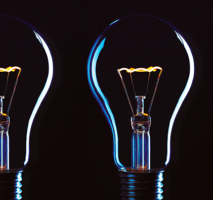
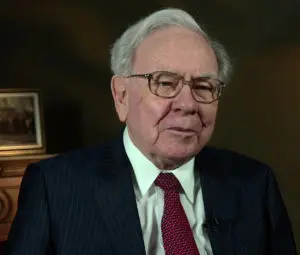

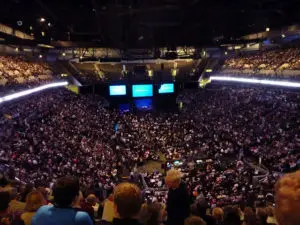

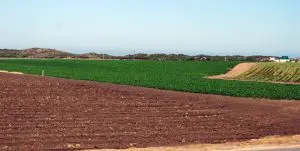





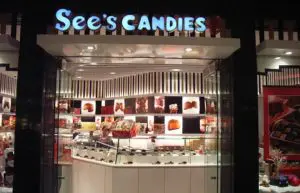
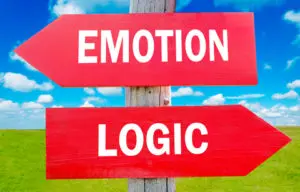
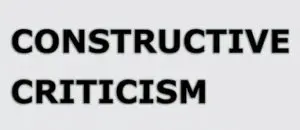
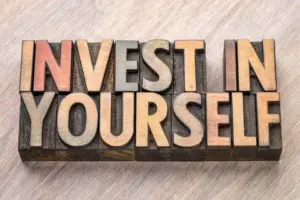


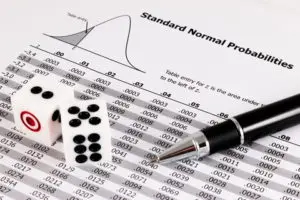




[url=https://ignentertainment.plclip.info/FnrQwfwYA5w-pga-tour-2k21-hands-on-preview-everybody-s-golf.html][img]https://i.ytimg.com/vi/FnrQwfwYA5w/hqdefault.jpg[/img][/url]
PGA Tour [url=https://ignentertainment.plclip.info/FnrQwfwYA5w-pga-tour-2k21-hands-on-preview-everybody-s-golf.html]2K21[/url] Hands-On Preview: Everybody’s Golf?